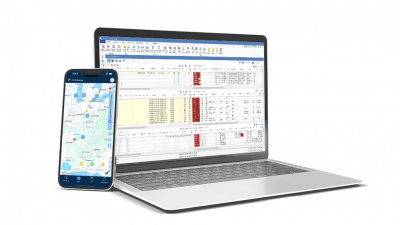The frozen food market is estimated to grow by $105. 72 billion from 2022 to 2026, accelerating at a CAGR of 6.95% during this forecast period. This market’s growth is primarily driven by an increasing consumer interest in frozen-ready meals, quality to-go food, and a preference for frozen fruits and vegetables that allow them to consume seasonal foods throughout the year.
The food service industry accounts for more than 50% of the frozen food market. After a pandemic dip, the market is forecasted to grow 10.76% from 2022 to 2029. Hotels, restaurants and other businesses that use foodservice vendors are increasingly purchasing frozen products to reduce back-of-house prep time, cooking time, and clean-up time.
Frozen foods provide decision makers with greater flexibility to purchase products as needed and store them for longer lengths of time so they can avoid out-of-stock or unavailable items as supply chain challenges continue to impact the industry, specifically the availability of quality ingredients and other products.
During a time when inflation has significantly raised the price of everything, especially food, turning to alternatives like frozen items can be a huge financial help to consumers and businesses. A recent survey of 350 foodservice operators across 10 segments from American Frozen Food Institute (AFFI) found that 90% are using frozen foods on their menus, 75% are increasing purchases of frozen appetizers, and 84% agree that frozen foods produce less waste.
Reducing food waste has become paramount for the industry to capitalize on these gains, both from an environmental and financial standpoint. Unfortunately, an estimated 40 percent of the food supply is wasted. When shipments continue to be delayed or stalled because of supply chain issues, the food can sit too long and, if it’s cold or frozen, can easily spoil if it goes out of temperature range.
Retailers and restaurateurs also have the difficult task of forecasting consumer demand, which is as unpredictable as the weather. Getting it wrong means ordering too much, which results in waste, or ordering too little and risk losing customers.
There are many persistent cold supply chain challenges that need to be ironed out as the frozen food market scales up, and it’s time to lean on modern solutions to help streamline the supply chain and enable greater visibility.
A Smarter Way to Handle the Cold
Food shippers have digital platforms available today that integrate with their transportation management systems (TMS) to help them tackle today’s cold supply chain challenges.
Cloud-based, AI-supported TMS solutions that automate and optimize the end-to-end shipment process can provide food shippers with the following:
- Greater sustainability: Food shippers want to drive environmentally sustainable practices that increase business efficiency and have positive economic impacts. With the power of AI tools that can analyze all potential possibilities, shippers are able to eliminate waste by reducing empty miles, unnecessary trips, and equipment idling, all of which have cost savings and environmental benefits.
- Easy orchestration: We exist in the days where there is ubiquity of connectivity. The challenge now is moving from connectivity to true supply chain orchestration. This involves the use of cloud-based platforms that can solve complex and dynamic routing problems and optimize shipment modes for truckload, LTL, and intermodal. TMS platforms can also help with carrier selection to get products to the right place, at the right time, in the safest and most efficient way possible, which is especially important for the cold supply chain.
- Smoother integration: Food shippers can integrate trailer telematics data, including temperatures, reefer fuel levels, and remote temperature control, into a TMS platform to closely monitor and control shipment quality. This data is made available on a real-time interface so shippers are always aware of the latest status of the shipment, including trailer locations and other cargo conditions. This view also serves as an accurate dispatch record for refrigerated shipments, starting from the time a trailer is pre-cooled to when it is loaded and arrives at the destination.
- Decision support: The right TMS helps improve labor efficiency by establishing a single source of truth to work and make decisions from and to establish a clear chain of custody. Modern platforms eliminate manual methods for tracking critical information to increase overall dispatch productivity. The technology allows dispatchers and load planners to do more with less, helping to reduce many of the frustrations and tensions they may be feeling today with outdated, clunky systems.
- Improved visibility: To ensure timely delivery of cold or frozen items, shippers need greater visibility and understanding of where and when the product will show up at its destination as well as any issues that occurred along the way. Advanced solutions allow shippers to capture locations, temperatures, and arrivals and departures at their facilities, so the shipper knows which loads are behind schedule to get loaded or unloaded more quickly.
Shipper TMS from PCS Software is designed to improve visibility within the cold supply chain. Our platform provides the end-to-end shipment insights that are required today to increase sustainability with operations and ensure the food itself remains safe and secure by the time it reaches the end customer.
If you’re struggling with the complexity of the cold supply chain today, know that you’re not alone and that we’re to help. Request a demo and let’s connect.



